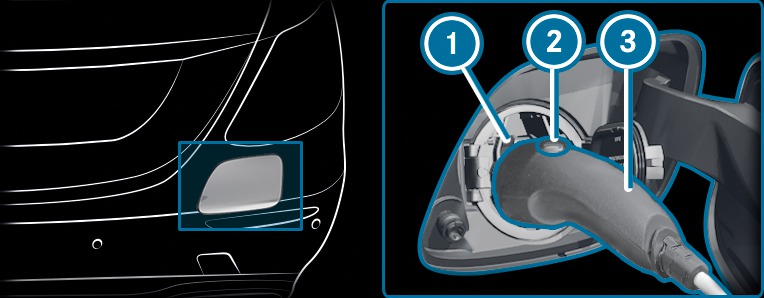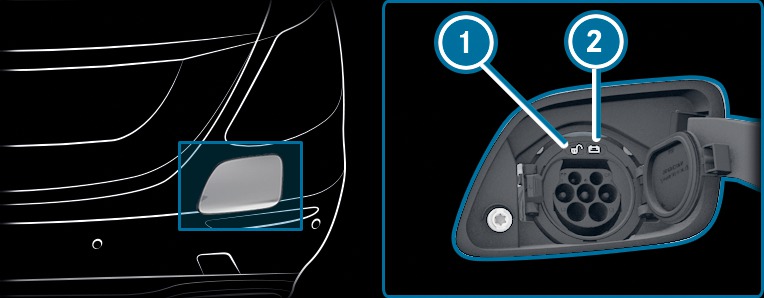The charging process uses high voltage.
The vehicle is equipped with an electrical fuse for voltage surges in the mains supply. This electrical fuse may be blown during severe thunderstorms, for example, and may cause the building's circuit breaker to trip and the charging process to be interrupted. These functions help to protect the vehicle.
After the building protection system has been switched on again, the charging process resumes automatically.
Following an interruption in the power supply in which the building's circuit breaker is not tripped, it may take up to ten minutes for the charging process to resume automatically.
During the charging process, the charging cable and charging cable connector may heat up within permissible limit values.
The mains power supply and the charging cable are not damaged.
The instructions for handling the charging cable and controls on the charging cable have been followed.
Depending on the national version, the vehicle is equipped with one of the following vehicle sockets.

 on charging cable connector
on charging cable connector  and remove charging cable connector
and remove charging cable connector  from vehicle socket
from vehicle socket  .
. If the charging cable connector is blocked, contact a qualified specialist workshop.



The charging process is then ended. The  indicator lamp
indicator lamp  lights up white. The vehicle socket is unlocked.
lights up white. The vehicle socket is unlocked.
After the 30 seconds have elapsed, the vehicle socket will be locked again and the charging process will resume.
If you cannot remove the charging cable connector, repeat the unlocking procedure. If the charging cable connector is still locked, contact a qualified specialist workshop.
After the charging cable connector has been disconnected, the left  indicator lamp
indicator lamp  on the vehicle socket remains lit for some time before switching off.
on the vehicle socket remains lit for some time before switching off.

